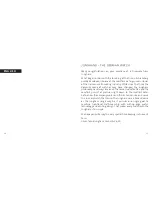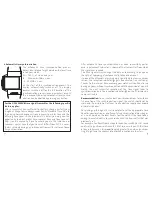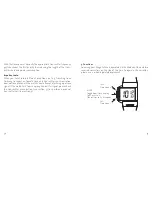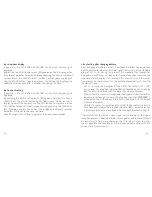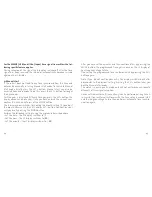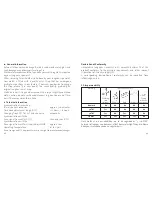
29
28
Contents
Page
1.
Radio technology
29
2.
Automatic time synchronisation
32
3.
Functions
35
3.1
Time display
36
3.2 Date display
36
4.
Reception indicator
37
5.
Manual time synchronisation (transmitter calls)
37
5.1
Automatic transmitter search
39
6.
Settings
41
6.1 Setting the time zone
41
6.2 Setting the language
41
6.3 12/24-hour display
42
6.4 Contrast setting
42
7.
Re-starting after changing battery
43
7.1
Manual start
44
8.
Illumination
46
9.
Ready for use
47
10. General information
48
11.
Technical information
48
12.
Impermeability
49
1. Radio technology
The most up-to-date way to keep time.
5,000 years have passed since timekeeping began with sundials. In the
interim there have been water clocks, the mechanical clocks of the
13th century and quartz watches. Now we have the Junghans radio-
controlled watch. This is a watch that, with good reception, will never
go wrong and never need setting. The Junghans radio-controlled watch
is absolutely precise, as it is linked via radio technology to the timing
control of the most accurate clock in the world, For Europe this is the
Caesium Time Base at the Physikalisch-Technischen Bundesanstalt in
Braunschweig (Germany’s Institute of Natural and Engineering
Sciences). For Japan the Caesium Time Base of the National Institute for
Information and Communications Technology (NICT), a public admini-
stration authority organisation. For North America it is the U.S.
Commerce Department’s Caesium Time Base at the National Institute
of Standards and Technology (NIST) in Boulder, Colorado. These clocks
are so accurate that they are expected to deviate by no more than
1 second in a million years.


